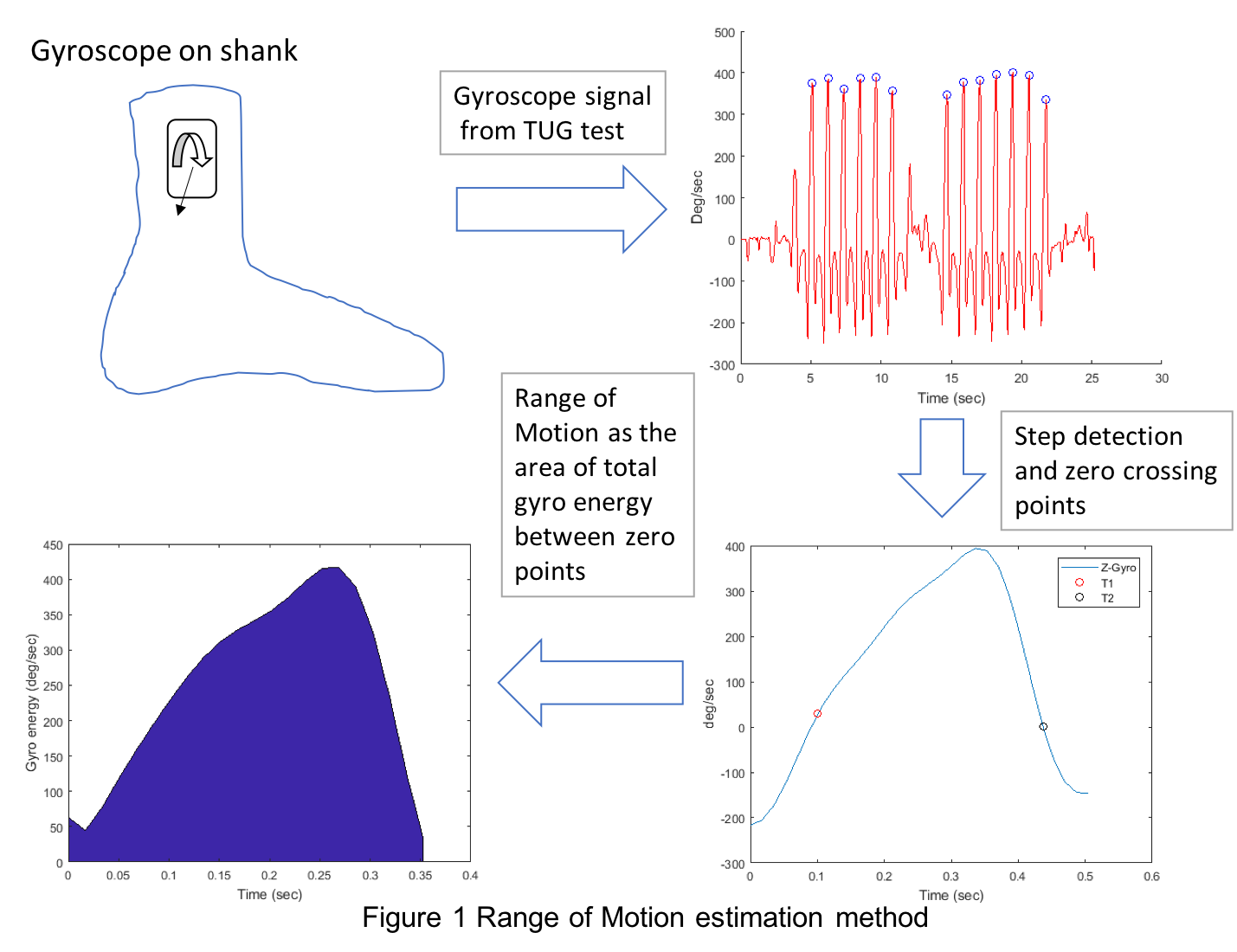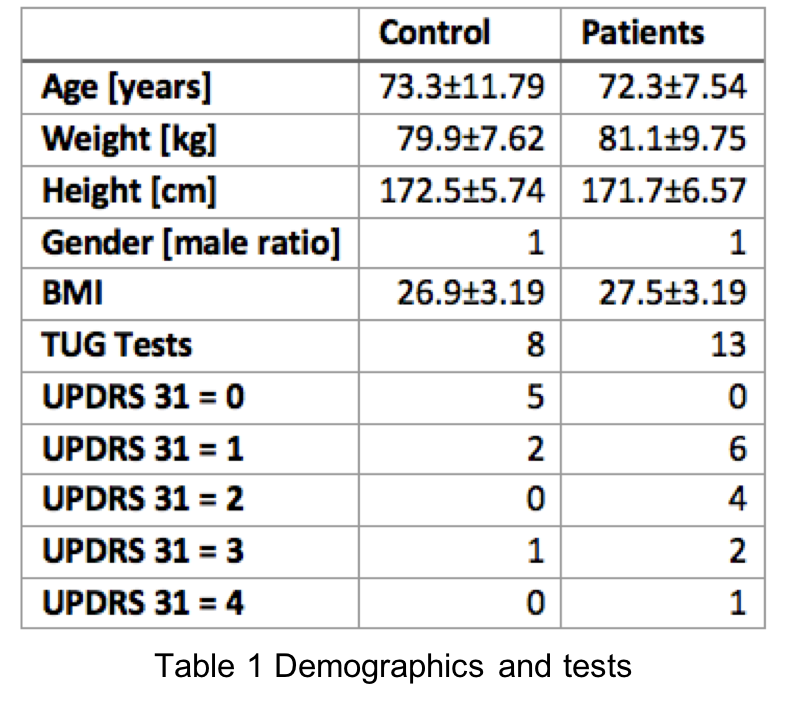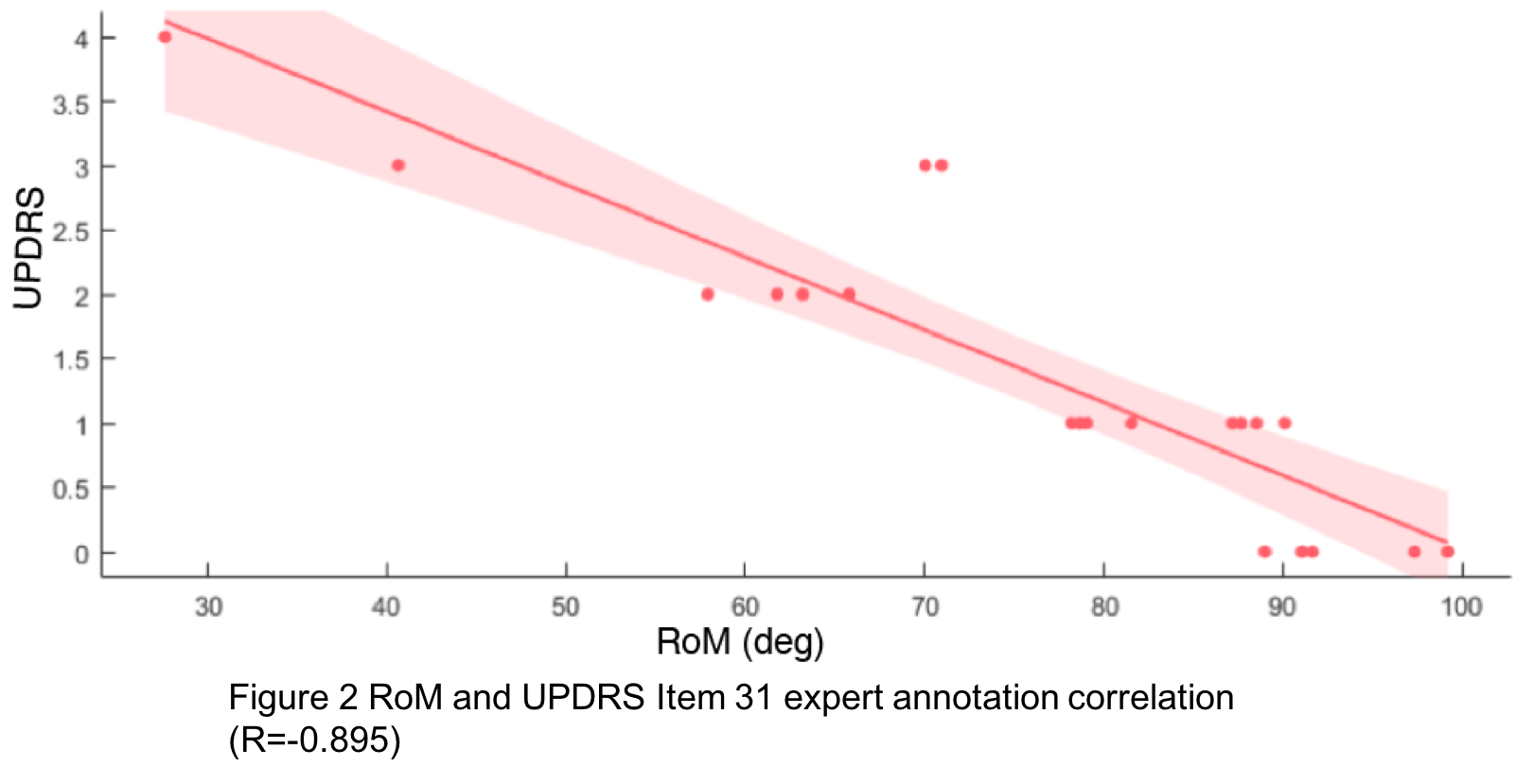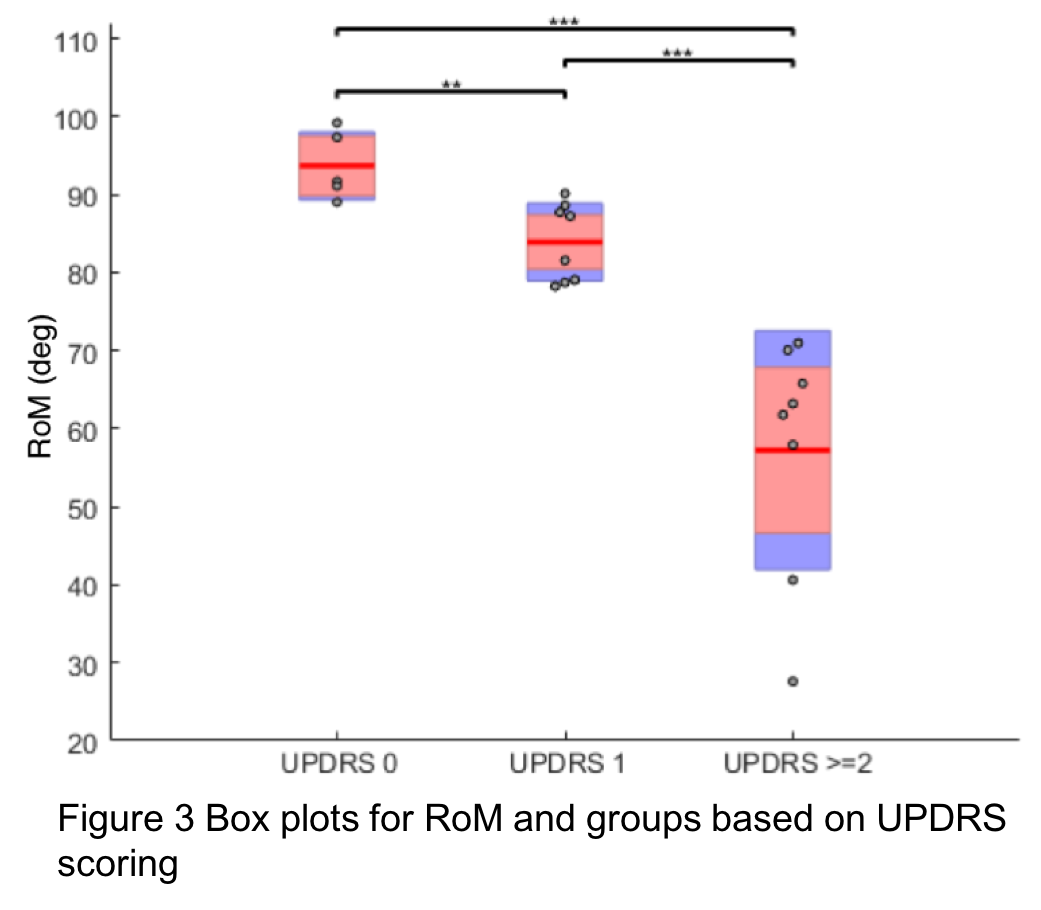Category: Technology
Objective: The purpose of this study is to evaluate the efficacy of a gyroscope-based estimation of shank range of motion (RoM) as a measure to automatically assess gait impairment in Parkinson’s disease (PD) patients and elders.
Background: Gait impairment, is a common symptom in PD, characterized by small and shuffling steps, slowness and reduced movements, often evaluated in clinical practice with the timed up and go (TUG) test [1]. Instrumented TUG tests have been introduced to objectively quantify performance in TUG tests using inertial measurement units (IMU) sensors [2]. We investigated the effectiveness of range of motion (RoM), also identified as a good indicator of gait impairment in [2], extracted from IMU sensors attached on the shank during TUG tests.
Method: Seven PD patients and 6 age-matched healthy subjects (elders) were recruited in this study. Most subjects performed the TUG test twice. Some of them only performed it once due to heavy impairment. They were all recorded in video and their gait was evaluated by an expert, annotating the UPDRS Item 31 for gait impairment. For each TUG session the gait parameters were extracted from the gyroscope of devices mounted on both shanks. Steps were identified and RoM extracted for each step (Figure 1). The average of both legs was calculated. Based on the expert’s annotation, three subject groups were considered, those with UPDRS=0, those with UPDRS=1 and those with UPDRS>1. A Pearson’s correlation coefficient between RoM values and expert’s annotations was evaluated, as well as t-test comparison for the three groups, considering their RoM values.
[figure1]
Results: Demographics and tests are presented in Table 1. The Pearson’s correlation coefficient between the RoM values and expert’s UPDRS Item 31 assessments was R=-0.895 (Figure 2). The boxplot of the three groups is presented in Figure 3. All groups were found to be statistically different (p-values<0.01).
[table1]
[figure2]
[figure3]
Conclusion: RoM performs well in evaluating gait impairment in instrumented TUG test and potentially in other gait tests or free walking monitoring of PD patients.
References: [1] Soto-Varela A, Rossi-Izquierdo M, del-Río-Valeiras M, Faraldo-García A, Vaamonde-Sánchez-Andrade I, Lirola-Delgado A, Santos-Pérez S. Modified Timed Up and Go Test for Tendency to Fall and Balance Assessment in Elderly Patients With Gait Instability. Frontiers in Neurology. 2020; 11: 543. doi: 10.3389/fneur.2020.00543 [2] Toosizadeh N, Mohler J, Lei H, Parvaneh S, Sherman S, and Najafi B. Motor Performance Assessment in Parkinson’s Disease: Association between Objective In-Clinic, Objective In-Home, and Subjective/Semi-Objective Measures. PLoS One. 2015; 10(4): e0124763. doi: 10.1371/journal.pone.0124763
To cite this abstract in AMA style:
G. Rigas, N. Kostikis, N. Tachos, K. Tsamis, M. Tsiknakis, S. Konitsiotis, D. Fotiadis. Shank range of motion as a measure of gait impairment in TUG test [abstract]. Mov Disord. 2021; 36 (suppl 1). https://www.mdsabstracts.org/abstract/shank-range-of-motion-as-a-measure-of-gait-impairment-in-tug-test/. Accessed December 27, 2025.« Back to MDS Virtual Congress 2021
MDS Abstracts - https://www.mdsabstracts.org/abstract/shank-range-of-motion-as-a-measure-of-gait-impairment-in-tug-test/




